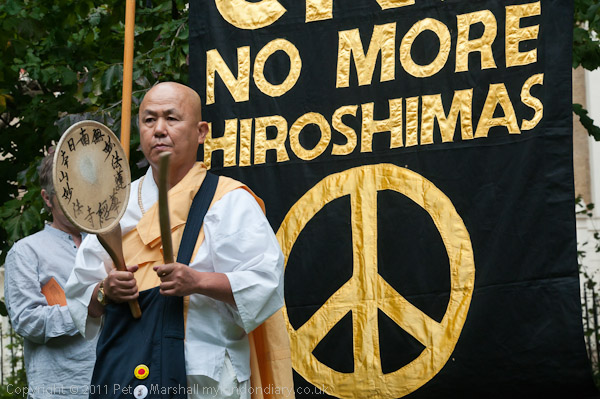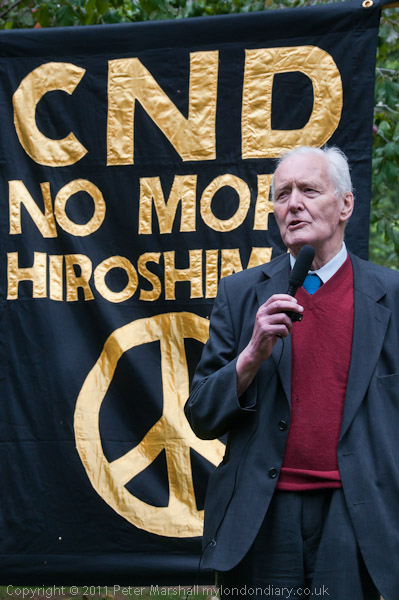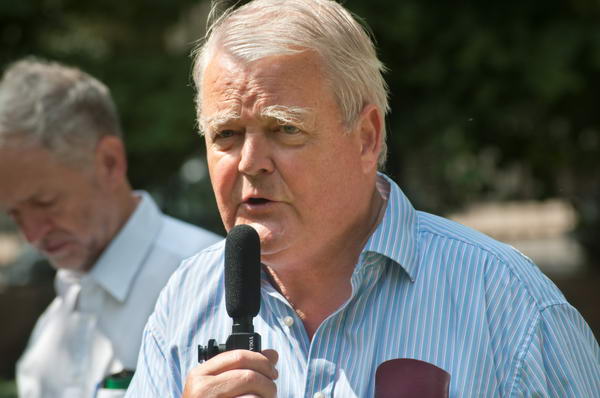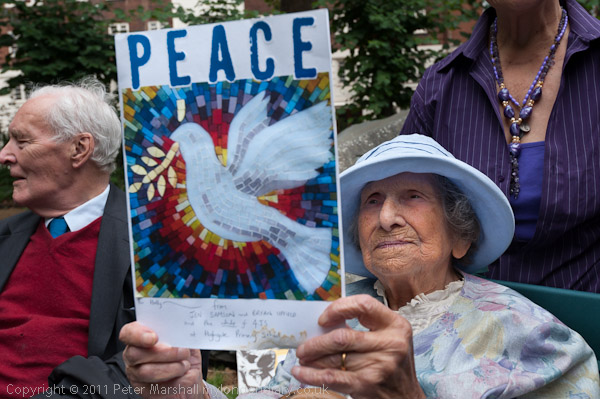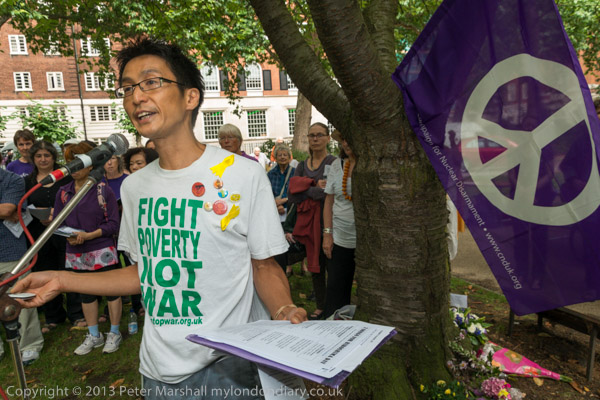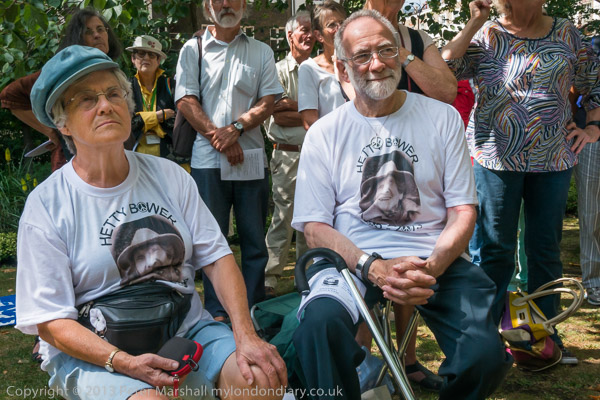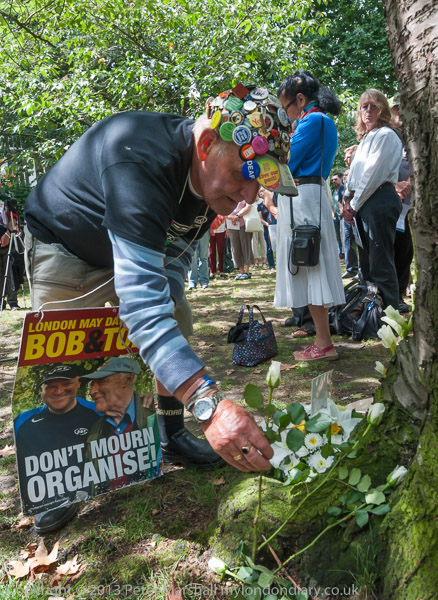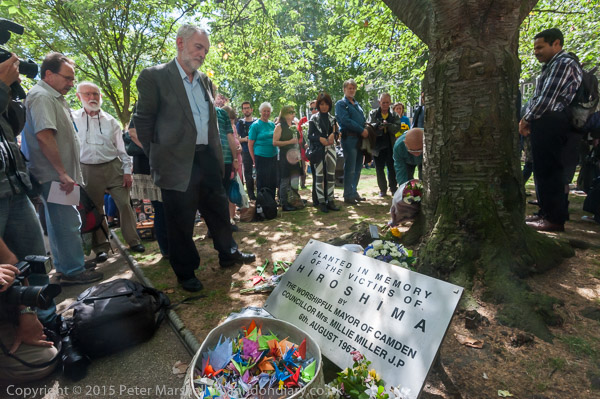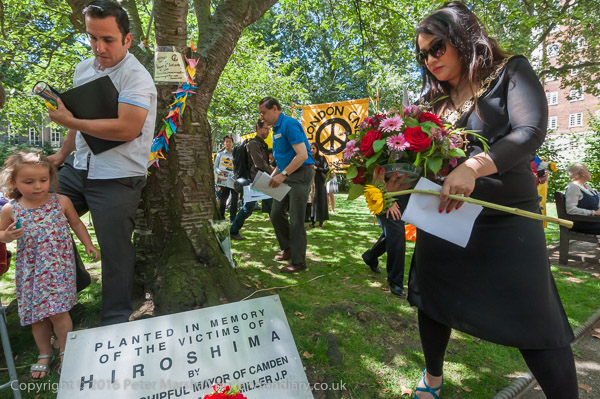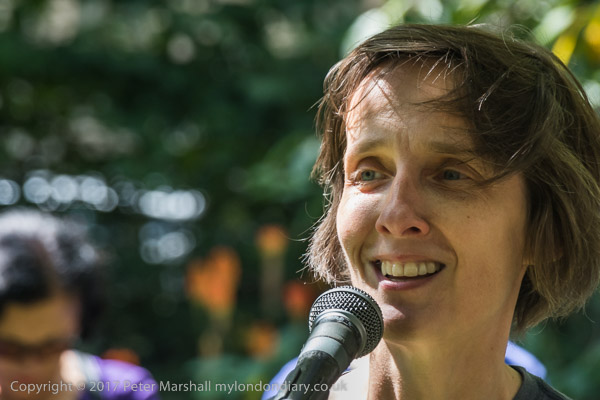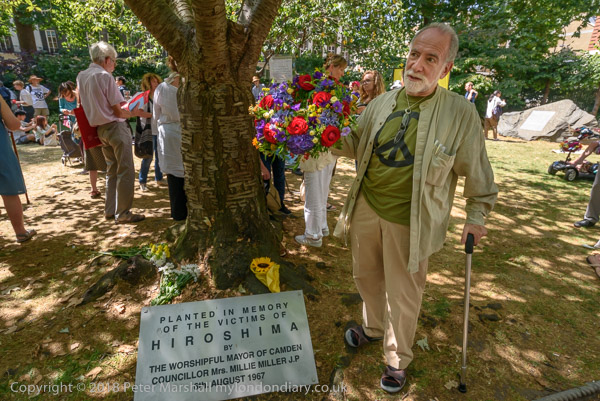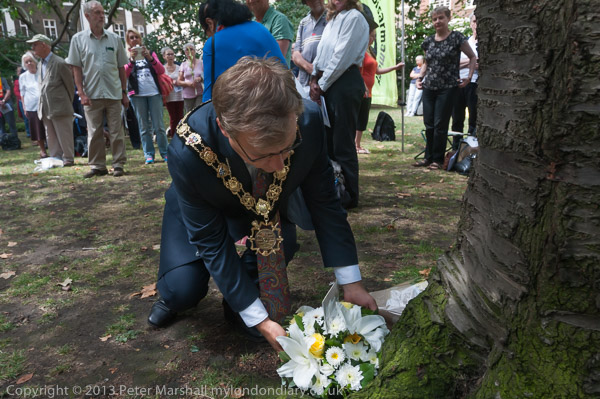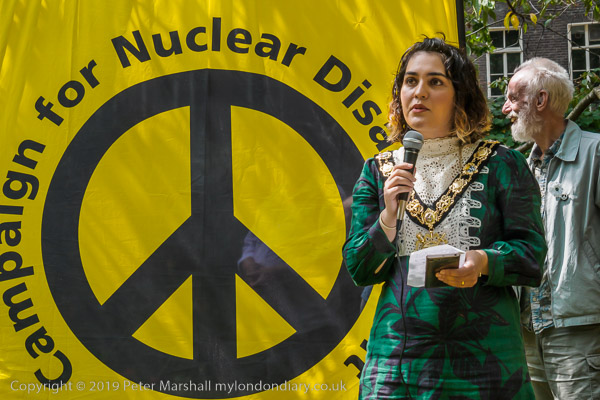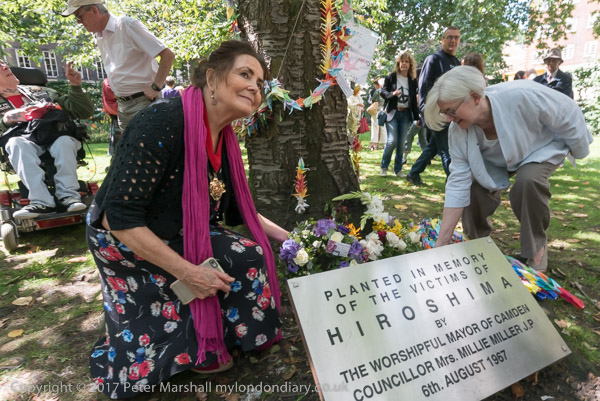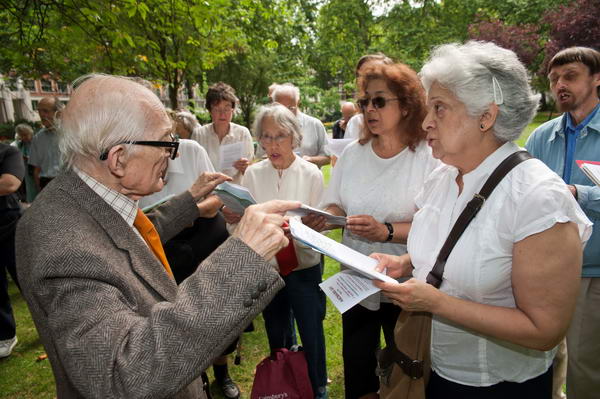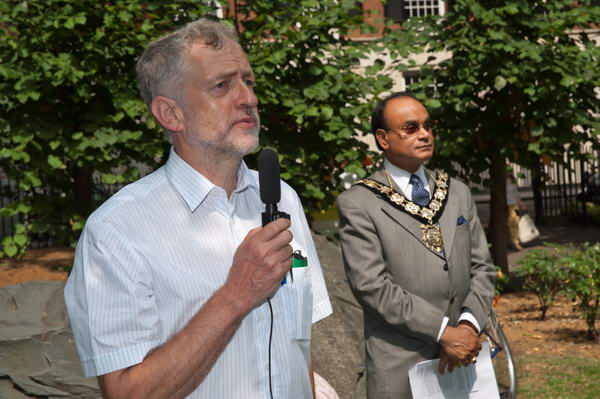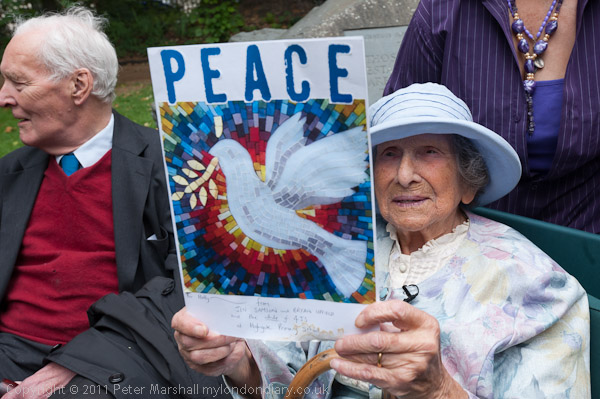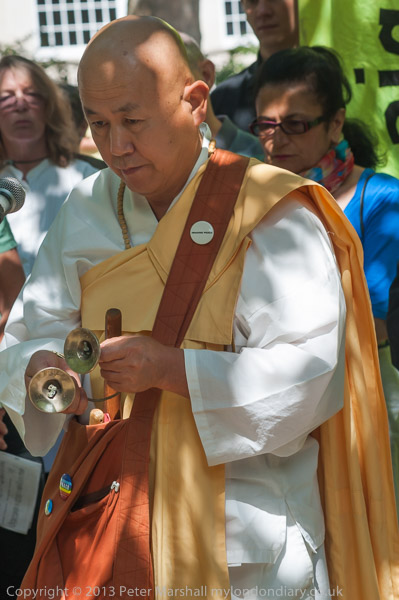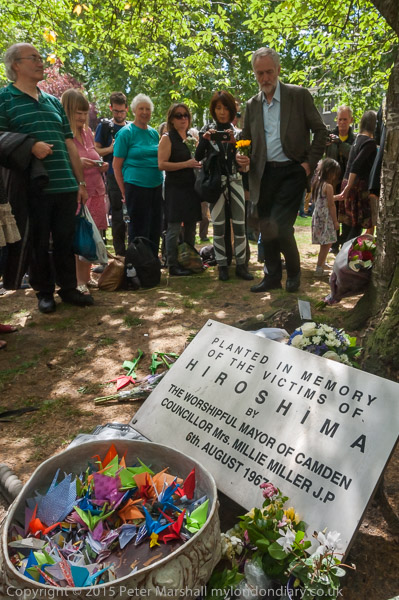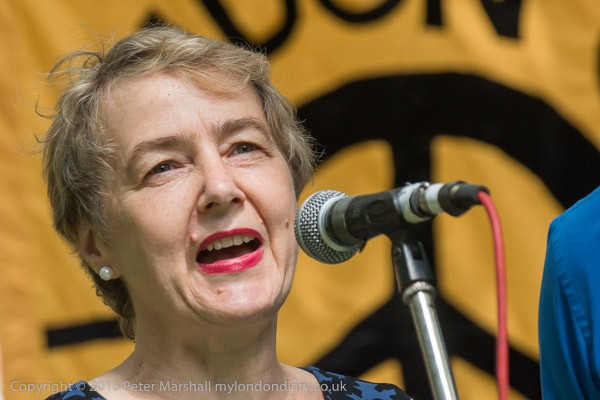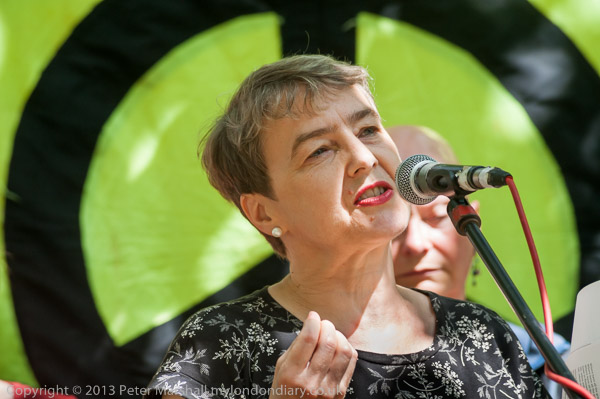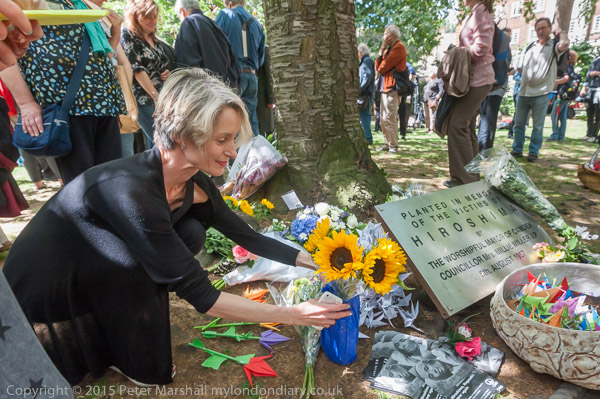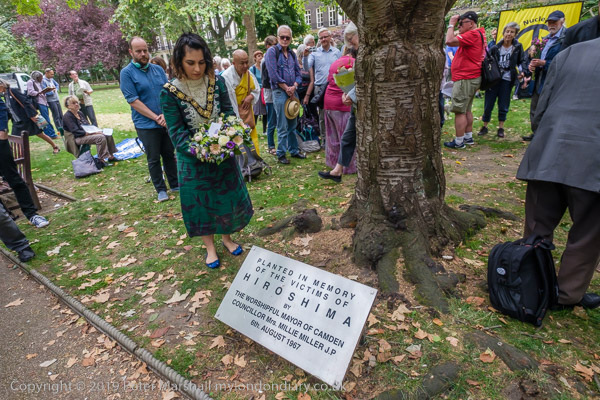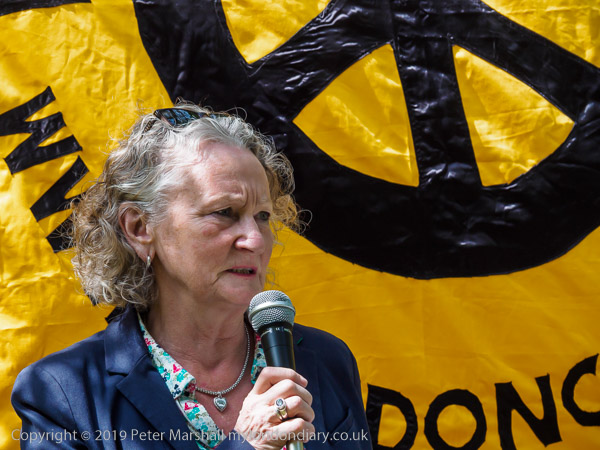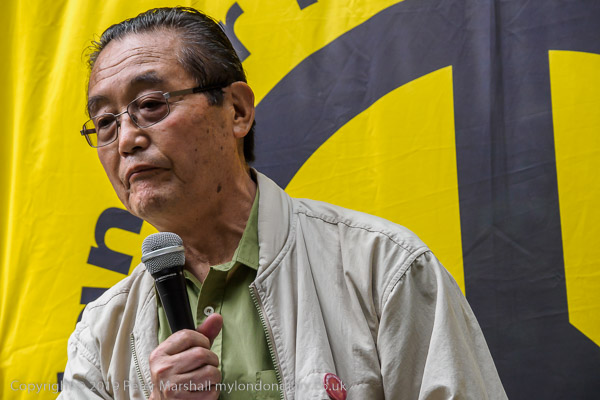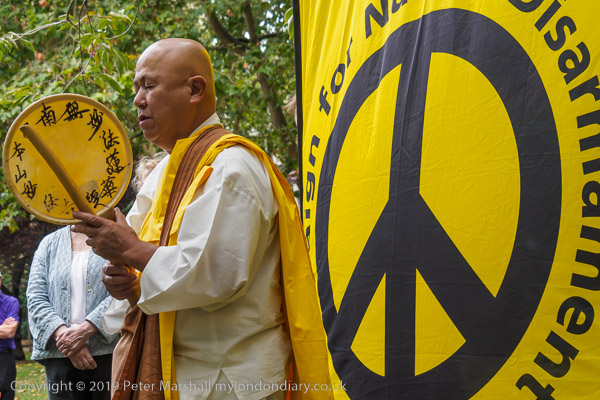Hiroshima Day Ceremony: On 6th August 2004 I went to the annual Hiroshima Day commemoration organised in Tavistock Square by London CND. It’s an event I like to attend each year if I’m in London, and one I’ve photographed in quite a few years.
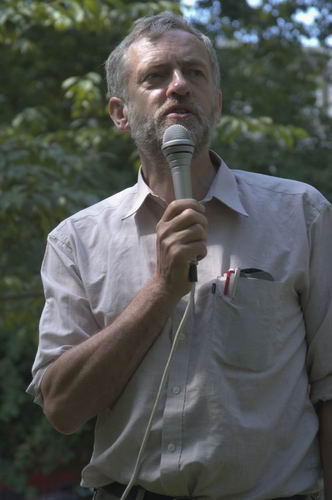
The bombs heralded the start of a new age, the Atomic Age, and were clearly a war crime, indiscriminately destroying huge numbers of innocent civilians and with little or no military purpose. Many who survived the initial blast died in the following weeks, months and years later from the effects of nuclear radiation, particularly from the ‘black rain’ that fell later in the day caused by the bombing.
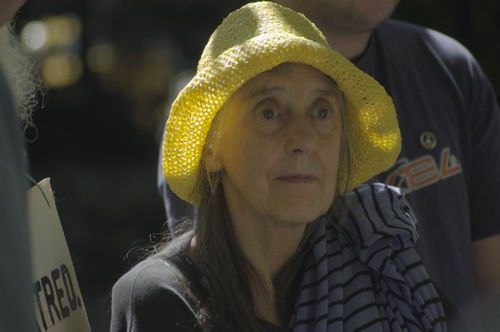
Last Saturday (02 Aug 2025) BBC Radio 4’s Archive On 4 broadcast Exposing Hiroshima, the story of US attempts to cover up the scale of the casualties and deny the “deadly and lasting impacts of radiation” revealed by Australian journalist Wilfred Burchett, the first Western journalist to publish an uncensored eye-witness account from Ground Zero in Hiroshima. Eventually revealed to the world on the front page of the Daily Express the US response was a PR campaign to supress the truth, dismissing his and other articles that emerged as ‘Japanese propaganda’.
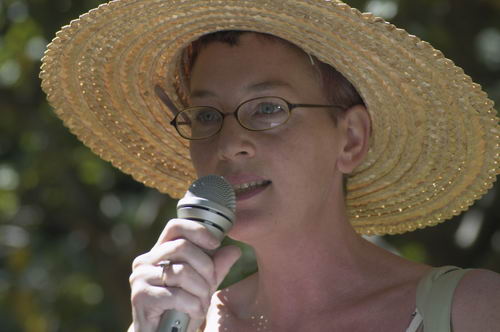
The pictures here are all from 6th August 2004. They were made with my first DSLR, the Nikon D100 and converted from RAW files in 2004 using the then availahle conversion software which was not up to current standards. I’m sure I could do better if I now went back to the original files.
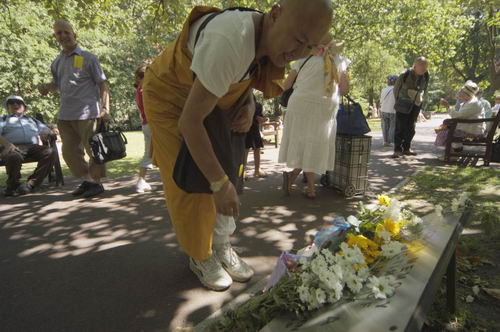
Back in August 1945 Japan was already ready to surrender and the allies (or at least the USA) knew this. They wanted to show Russia that they had a weapon that could be used should Russia step out of line. Hiroshima and Nagasaki were annihilated as a gesture to Stalin (“Uncle Joe” as some newspapers liked to refer to him then.)
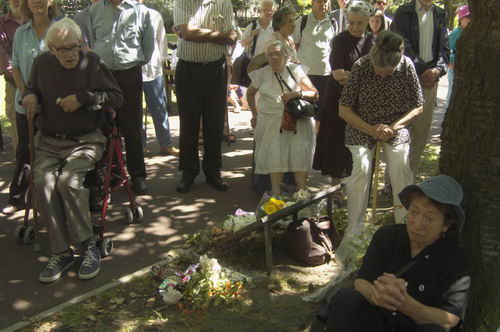
Since then we have had a continuous campaign of lies and deceptions over nuclear weapons. It continues to this day with the ridiculous pretence that we have an independent nuclear weapon, and we are being softened up for the arrival of ‘mini-nukes’, smaller but even more dangerous nuclear weapons.
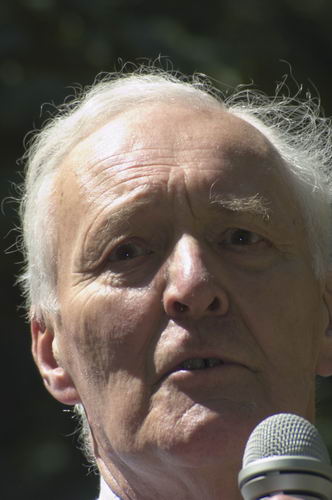
The anniversary was commemorated at Tavistock Square by Hampstead and London Region Campaign For Nuclear Disarmament. Those present included the former labour leader Michael Foot and Tony Benn, as well as the oldest member of the Labour Party and an American visitor from US Labor Against The War.
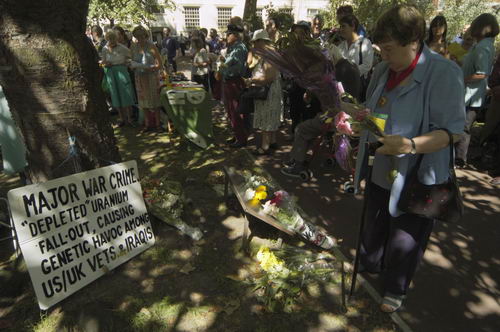
Tavistock Square has a number of interesting memorials, including a fine statue of Gandhi, and a cherry tree planted in memory of the victims past and present of the atomic bombs dropped on Hiroshima and Nagasaki on August 6th and 9th 1945. The ceremony was a reminder that if anyone is still looking for weapons of mass destruction they are present in America; any “war on terror” should perhaps start against the country which used these weapons to devasting effect without any compunction in 1945.
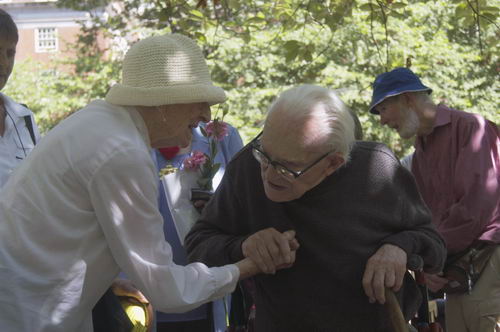
The event was chaired by local MP Jeremy Corbyn, and speakers included Ken Savage of Greater London Pensioners Association, Sophie Bolt, Chair of London CND [and now CND General Secretary], Darren Johnson, GLA Green Party Leader and Tony Benn. Mordechai Vanunu had been invited to come from Jerusalem where he is under house arrest, but was prevented from coming by the Israeli government. There were also songs from the Workers’ Music Association choir.
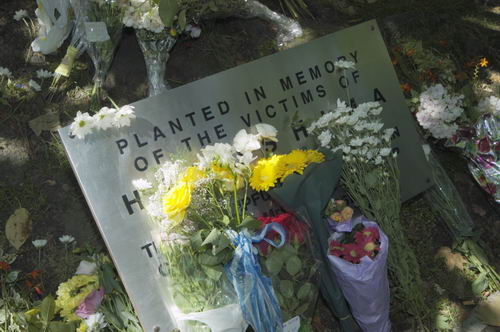
More pictures on My London Diary
Flickr – Facebook – My London Diary – Hull Photos – Lea Valley – Paris
London’s Industrial Heritage – London Photos
All photographs on this page are copyright © Peter Marshall.
Contact me to buy prints or licence to reproduce.
